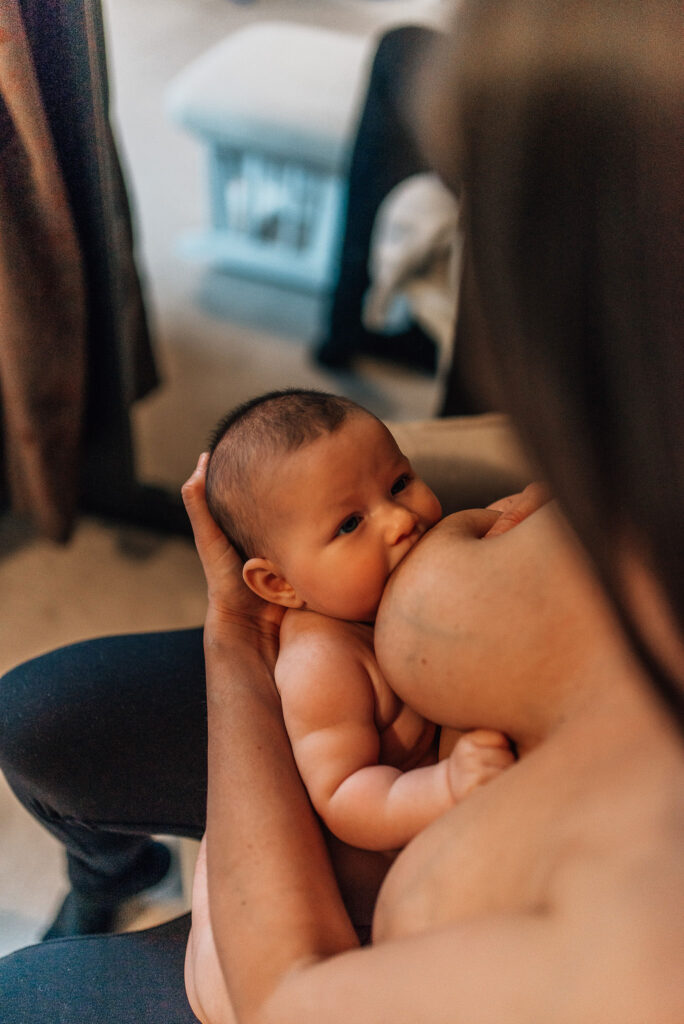
What is tongue tie?
Tongue tie also known as ankyloglossia, is a condition (that appears to be genetic in nature) that is present at birth, that restricts the tongue’s range of motion.
The lingual frenulum is a piece of tissue under the tongue. It is a part of normal anatomy. Tongue tie is when the lingual frenulum is restricted. Appearance alone doesn’t give us enough information. Assessing tongue function along side appearance, gives us the full picture. Hence why a tongue tie assessment involves a thorough mouth assessment, where a specialist puts a gloved finger in your baby’s mouth to get all the information.
Tongue tie division is a surgical proceedure where the frenulum is released / cut. BUT this is only a small part of the solution. So keep reading to find out more.

What is a failed tongue tie division?
Here, what we are talking about, is when the expected outcome(s) haven’t occured post division. Whether that’s no improvement to problems, some initial improvement but things then deteriorate, worsening of problems or it seeming as though the tongue tie has re-attached. Read below for causes and solutions.
Understanding tongue tie
There are a multitude of symptoms and struggles that can be indicative of a tongue tie. This list is not exhaustive, but a starting place to consider:
- Painful feeding
- Struggling with flow (nursing or bottle feeding)
- Poor latch
- Slipping off
- Poor weight gain
- Decreasing weight gain later on
- Wind
- Colic
- Reflux and silent reflux
- Unsettled baby
- Mouth breathing
- Snoring
- Poor sleep
- Long feeds
- Developmental delays (generally with other symptoms above)
- Heightened nervous system/ never seem to relax
- CMPA
- Allergies
Each baby will present in different ways. For some babies they will have only a few symptoms, others will have multiple symptoms and more complex struggles.
Tongue tie division (frenulotomy)
In the UK tongue tie divisions are carried out by health care professionals who have trained in the skill of frenulotomy. And are governed by the CQC. The procedure involves cutting the frenulum with either sterile scissors or a laser. Generally in the UK scissors are the preferred method due to precision, comfort and ensuring minimal scar tissue. The procedure is usually pretty quick with minimal bleeding. Although popular in the USA, there is no evidence to suggest that dividing a lip tie is beneficial, therefore it generally isn’t carried out in the UK. There is no local or general anaesthetic involved, as there are minimal nerve endings in the frenulum.
The procedure can be carried out from birth, up until 12 months by most practitioners in the UK. Some will only carry out up to 6 months and others will treat babies over 12 months. It depends on their training, experience and preference. The older the baby, the more challenging it can be, particularly when there are lots of teeth and less space to work with. So it will always be assessed on a case by case scenario.
Generally practitioners will be happy to carry out a division on a tongue tie, if it is felt that the presentation and symptoms indicate that a tongue tie division would be beneficial.
Pre and post division care varies greatly across the UK as well as the globe. Currently, in 2024 it is widely accepted that simply cutting the frenulum is all that is needed to resolve the issues. But if you are reading this, it’s likely that you have found this to not be true, and I will explain the possible reasons why below.
Causes of failed tongue tie division
No improvement to problems or initial improvement but things then deteriorate:
There could be a few causes for the struggles you’re seeing. Sometimes it’s that the tongue wasn’t able to move well prior to division, and therefore post division it hasn’t been able to move well on it’s own and as a result there is little or no improvement. Other times scar tissue can be the culprit of ongoing issues (see below for more info).
Worsening of problems:
Usually people see an initial improvement post division ( though some don’t), and sometimes things then end up worse than before the division. This is usually down to scar tissue. Scar tissue takes 18-24 months to settle fully. Although it can appear fully healed soon after the procedure, it remains maliable and can fall back into old patterns without the correct post division support. What this means is, if we don’t do exercises for 18-24 months post division, to encourage the scar tissue to be long and work with the tongue, it instead can become tight and short, restricting the tongue much like the tongue tie did, and sometimes worse than the tongue tie originally was.
This tends to be more prevelant when a division was carried out when there was not enough space under the tongue in the first instance.
Using simple exercises we can expose the frenulum fully, allowing the floor of the mouth to rest down and the tongue to rest back. In an initial assessment, to avoid this sort of complication, this is where I would spend time creating more space and helping the frenulum, to either be more exposed or in instances of faux ties, the frenulum will begin to sit back (more on faux ties below). Either way, you’ll be sent away for a couple of weeks to do simple exercises a few times a day, as needed to support your little ones challenges, and prepare for a tongue tie division if needed. Occassionally 2 weeks isn’t enough and more time may be needed. It’s important to not rush to the cutting of the frenulum, because, as you can see, it is only a very small part of the solution.
Seeming as though the tongue tie has re-attached:
If a tongue tie division is carried out on the correct plane, it generally won’t be able to re-attach. Instead often scar tissue is the culprit again. Scar tissue can look like a tongue tie, which in fact means it needs remodeling. If you’re under the impression your baby’s tongue tie needs re-dividing, I would urge you to see a practitioner who takes a holistic approach (and has trained with Carmelle Gentle, so if familiar with scar tissue remodeling) and will look at your whole baby and work to address the scar tissue. Simply re-cutting the tissue will result in more scar tissue and the issue un-resolved still and sometimes worse. If you originally see a practitioner such as myself or someone who has trained with Carmelle; I would urge you to go back. Everything is fixable. It can be challenging to keep up daily exercises for 2yrs. Life gets in the way. Your little one is ill, has a growth spurt, teething etc and things can be more challenging again. That’s what we are here for. To ensure you have the result you need, long term.
The Solution:
Whatever your struggles are post division, I would encourage you to see a holistic practitioner, who will address your baby’s entire body and challenges, as well as supporting with scar tissue remodeling (as above), optimising feeding, and getting your baby’s tongue moving in an optimal way. Results can often be seen after just one appointment and be the reset needed to get back on track and benefit from the division as anticipated.
Faux tongue tie
Assessing for a tongue tie involves looking at appearance and function as previously mentioned. There is another factor though. When there is tension in the tongue and mouth, it can do one of two things. It can hide a tongue tie (sometimes called a hidden or posteroir tongue tie) OR it can “look” like a tongue tie when it actually isn’t truly the case. For both these instances, mobilising the tongue initially, getting the tongue moving well and creating space under the tongue will help towards resolving either issue. If it is a true tongue tie, the frenulum will be exposed and then be ready for a division after a couple weeks or the faux tie will sit back into the tongue (again after a couple weeks) as it always should have done and the tongue movement improved to normal as a result.
Seeking Professional Help
Always feel free to get in touch with me here:
Visit Carmelle Gentle’s site: https://www.thetonguetiecentre.org
Conclusion
As you know tongue tie isn’t as straightforward as cutting the frenulum and everything is fine. The cut is just a small piece of the puzzle. Taking time ahead of the procedure to prepare your baby’s tongue properly is essential, and then commiting to supporting with recovery for up to 2 years is key, whether by yourself or with the support of professionals. To summerise, if you’re struggling, you don’t have to. Get in touch to get the support you need. You’re not crazy and you’re not imagining things. You know your baby better than anyone.
